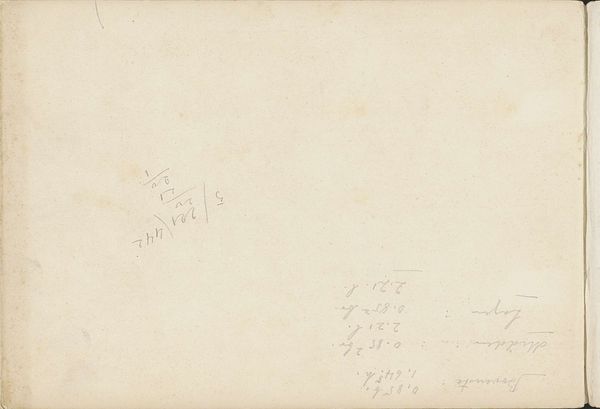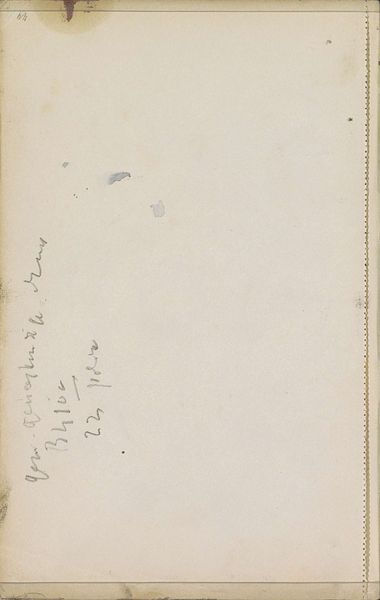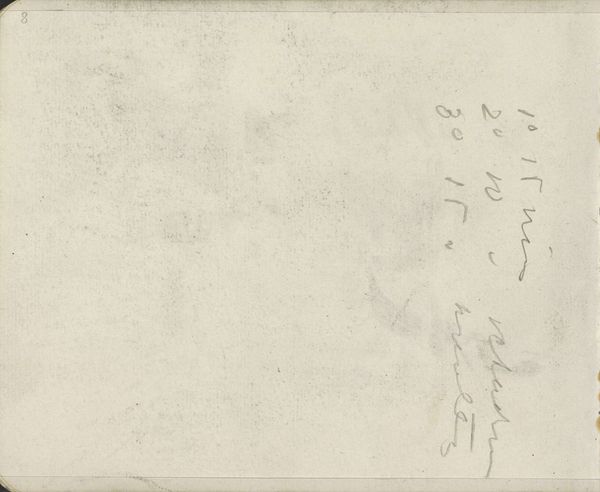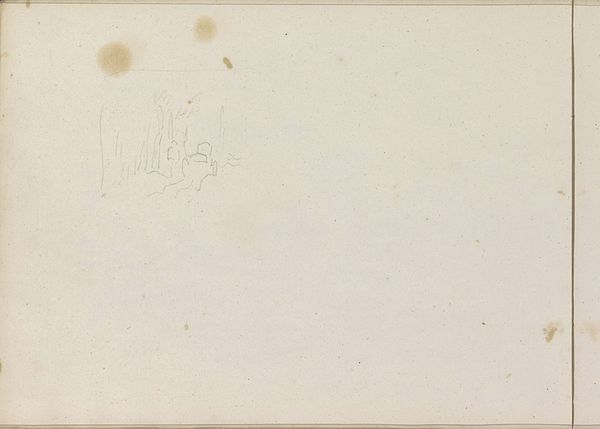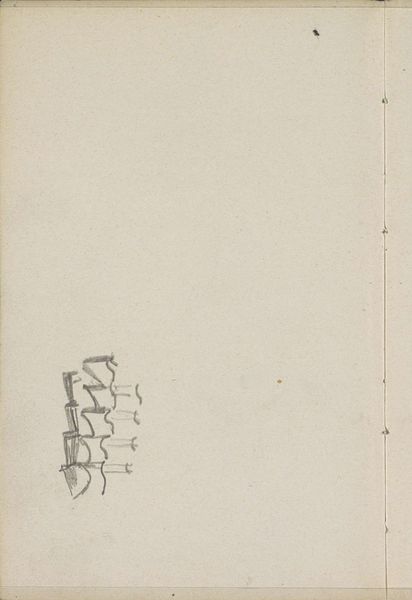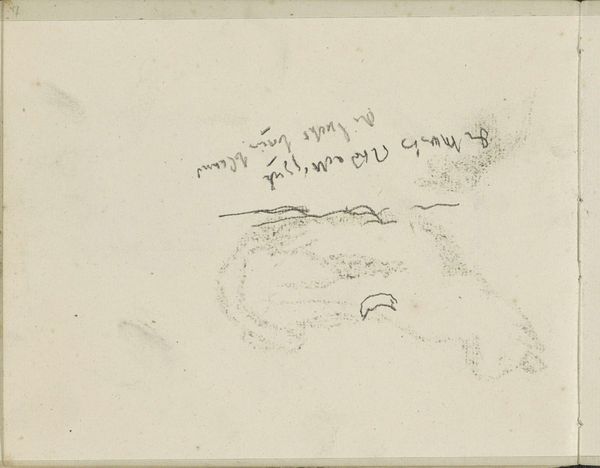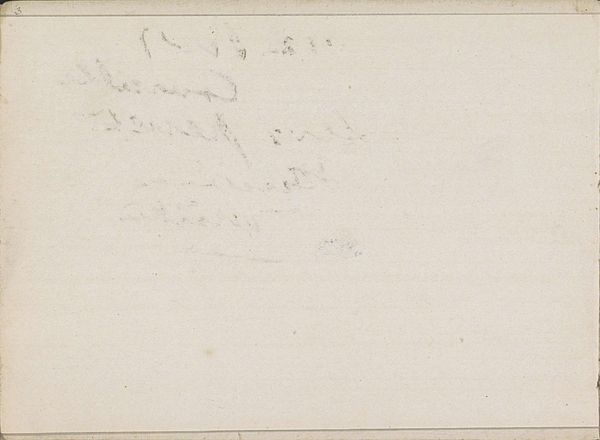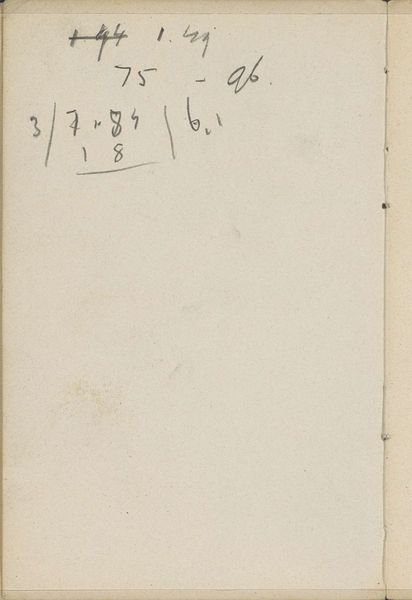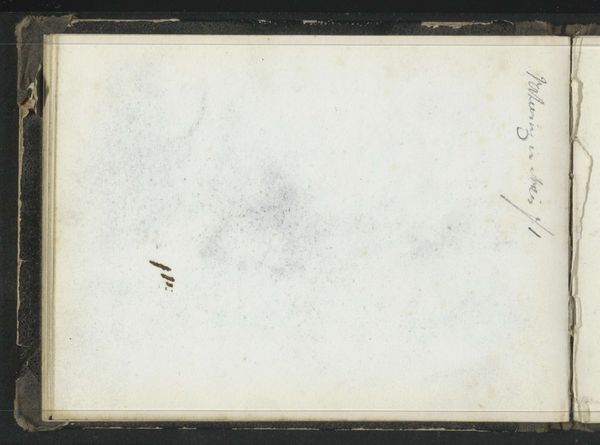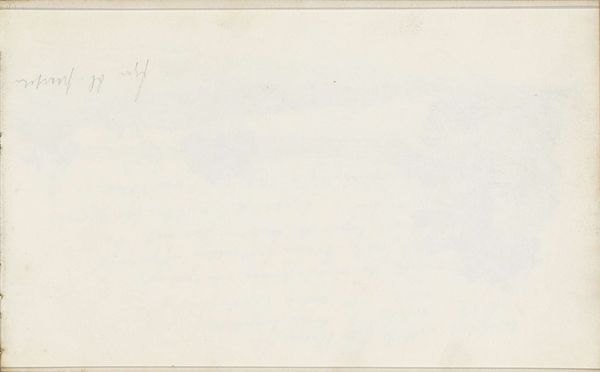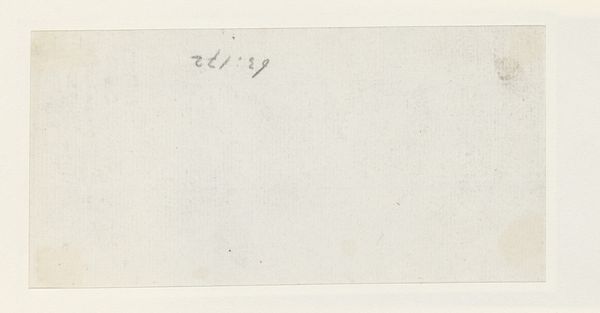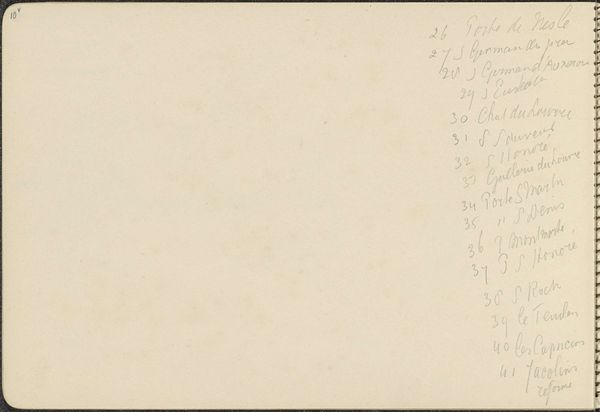
drawing, paper, impasto, ink
#
drawing
#
aged paper
#
toned paper
#
paper
#
personal sketchbook
#
impasto
#
ink
#
watercolor
Copyright: Rijks Museum: Open Domain
Curator: Anna Catharina Maria van Eeghen created "Notities" sometime between 1888 and 1901, utilizing ink and watercolor on paper. What’s your immediate impression? Editor: The immediate impression is one of delicate fragility. It whispers of untold stories, of private thoughts carefully jotted down and now, faintly visible on aged paper. The tones evoke a sense of nostalgia. Curator: That sense of nostalgia undoubtedly stems from the visible age and wear of the material. We are literally seeing time etched into the paper fibers, seeing its transformation via oxidation or use! You can almost feel the texture beneath your fingers. The aging process has, in a way, co-authored the work. Editor: Indeed! I see what appears to be handwritten notes... faded cursive which suggest intellectualism of the Victorian period. I'm compelled by what appear to be ghostly traces of script, remnants that hint at personal musings lost to time. I'm certain that even the handwriting styles here are telling if we had an expert analyze it, giving insight into Van Eeghen's thought processes. Curator: Absolutely! Handwriting is, itself, a material artifact reflecting social class and labor. Someone devoted painstaking hours into creating and utilizing these notebooks. The use of ink and watercolor reflects more than just the ability of Van Eeghen; such personal paper sketchbooks played an important, formative role as creative devices for generations of both male and female European intellectuals. Editor: It's remarkable how these subtle markings act as potent symbols of a bygone era, and a visual conduit to understand more about this creative intellect. What a remarkable item. Curator: The very production of paper, the crafting of ink, the social status to make use of that paper, tells an equally remarkable story of artistry through industry. Examining this sketch evokes such complex and deep cultural histories and production. Editor: Thank you. My view on such "historical documents" as revealing much more about their authors than originally intended is cemented further today. Curator: And I now have a far more richer symbolic picture for this notebook! Thank you as well!
Comments
No comments
Be the first to comment and join the conversation on the ultimate creative platform.
